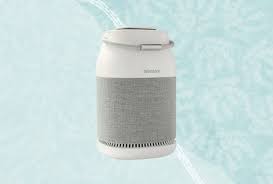Filtering Out the Noise: Selecting the Best Air Purifier for Your Space
In an age where indoor air pollution is a growing concern, choosing the right air purifier for your space has never been more important. With a myriad of options available on the market, ranging from basic models to high-tech devices, selecting the best air purifier can be a daunting task. However, by understanding your specific air quality needs, evaluating different features and technologies, and considering factors such as room size and budget, you can make an informed decision and select an air purifier that effectively cleans the air in your home or office. This comprehensive guide explores everything you need to know about selecting the best air purifier for your space.
Understanding Indoor Air Pollution
Before delving into the selection process, it’s essential to understand the sources and effects of indoor air pollution. Indoor air pollution refers to the presence of harmful pollutants, allergens, and irritants in the air inside buildings or enclosed spaces. Common indoor air pollutants include:
Dust and Dust Mites: Tiny particles of dust and dust mites can accumulate in carpets, upholstery, and bedding, triggering allergies and respiratory issues.
Pollen: Pollen from trees, grasses, and flowers can enter indoor spaces through open windows and doors, causing allergic reactions in sensitive individuals.
Pet Dander: Shedding skin cells, fur, and feathers from pets can become airborne and contribute to indoor air pollution, particularly for pet owners.
Mold Spores: Mold spores thrive in damp and humid environments such as bathrooms, basements, and kitchens, leading to respiratory problems and allergic reactions.
Volatile Organic Compounds (VOCs): VOCs are emitted by household products such as paints, cleaning agents, and air fresheners, and can cause headaches, dizziness, and respiratory irritation.
Indoor air pollution can have significant health effects, particularly for vulnerable populations such as children, the elderly, and individuals with pre-existing respiratory conditions like asthma or allergies. Long-term exposure to indoor air pollutants has been linked to respiratory diseases, cardiovascular problems, and even cancer. Therefore, improving indoor air quality through the use of air purifiers is essential for maintaining a healthy and comfortable indoor environment.
Types of Air Purifiers
Air purifiers employ various technologies and filtration methods to remove airborne pollutants and improve indoor air quality. Some of the most common types of air purifiers include:
High-Efficiency Particulate Air (HEPA) Filters
HEPA filters are highly effective at capturing airborne particles as small as 0.3 microns, including dust, pollen, pet dander, and mold spores. These filters consist of a dense mat of fibers that trap particles as air passes through, providing efficient filtration and improving air quality.
Activated Carbon Filters
Activated carbon filters are designed to adsorb and neutralize gaseous pollutants, odors, and volatile organic compounds (VOCs) from the air. These filters contain a porous form of carbon that attracts and traps odors and chemicals, leaving the air clean and fresh.
Ultraviolet (UV) Light Purifiers
UV light purifiers utilize ultraviolet (UV) light to disinfect the air by killing bacteria, viruses, and other microorganisms. These purifiers are particularly effective at reducing the spread of airborne pathogens and improving overall air quality in healthcare facilities, offices, and other indoor environments.
Ionizers
Ionizers emit negative ions into the air, which attach to positively charged particles such as dust, allergens, and pollutants, causing them to fall out of the air and onto surfaces. While ionizers can effectively remove airborne particles, they may produce ozone as a byproduct, which can be harmful in high concentrations.
Ozone Generators
Ozone generators produce ozone molecules that react with and neutralize airborne pollutants, odors, and bacteria. These generators are often used for odor removal and air purification in commercial settings but should be used with caution due to potential health risks associated with ozone exposure.
Factors to Consider When Selecting an Air Purifier
When choosing an air purifier for your space, consider the following factors to ensure that you select the best option for your needs:
Room Size and Coverage Area
Determine the square footage of the room or area where the air purifier will be used, as this will dictate the size and capacity of the device. Choose an air purifier with a Clean Air Delivery Rate (CADR) and coverage area suitable for the size of your space to ensure efficient air purification.
Filtration Efficiency
Consider the filtration efficiency of the air purifier and the types of pollutants it can effectively remove from the air. Look for air purifiers with HEPA filters for capturing airborne particles and activated carbon filters for removing odors and VOCs.
Noise Level
Take into account the noise level produced by the air purifier, especially if it will be used in bedrooms, nurseries, or other quiet spaces. Look for air purifiers with low decibel (dB) ratings or adjustable fan speeds for quiet operation, particularly during nighttime use.
Energy Efficiency
Choose an energy-efficient air purifier to minimize electricity consumption and reduce operating costs over time. Look for devices with ENERGY STAR certification or energy-saving features such as programmable timers, sleep modes, and auto-off functions.
Additional Features
Consider additional features and functionalities that may enhance the convenience and usability of the air purifier. These may include air quality sensors, remote controls, digital displays, filter replacement indicators, and smart connectivity for remote monitoring and control via smartphone apps.
Conclusion
Selecting the best air purifier for your space requires careful consideration of various factors, including air purification technologies, room size, filtration efficiency, noise level, energy efficiency, and additional features. By understanding your specific air quality needs and preferences, you can choose an air purifier that effectively removes airborne pollutants, improves indoor air quality, and promotes a healthier living environment. With the right air purifier in place, you can breathe easier knowing that your indoor air is clean, fresh, and free of harmful pollutants.

